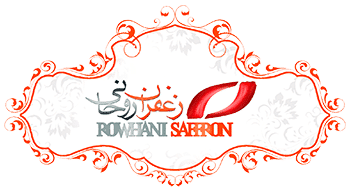How can the production of Iranian saffron be increased?
Traditional method of saffron production
Saffron flowers have been traditionally cultivated in the tropics for thousands of years.
It is very important to pay attention to the climate for planting saffron in the traditional way,
because saffron bulbs need warm and dry air to be far from rain.
To produce saffron in the traditional way, farmers must first choose the right soil.
This soil should be a mixture of sand and clay and be free of nutrients.
Then it is time to plant saffron onions. It is very important to pay attention to the quality of saffron onions.
Saffron onion has good resistance to cold and does not need much watering.
After about two to three weeks, the first saffron flower leaves emerge from the soil.
Then, in mid-October, they should be irrigated and wait until the end of November to harvest.
Harvesting saffron is also very expensive and paying attention to its time is a necessary necessity.
Because saffron should be harvested from sunrise until before 9 am when the flowers have not yet closed.
Traditional saffron cultivation needs irrigation and is facing problems due to the water shortage crisis.
The cost of harvesting saffron stigmas by hand in this method is very high and its efficiency is lower.
In traditional saffron cultivation, saffron bulbs remain in the soil for five to seven years,
it will have a much higher quality and the quality of this type of saffron is not comparable to greenhouse saffron.
After measuring the need of onions and saffron flowers for nutrients,
irrigate it and pay much attention to maintaining its moisture, light and ventilation.
Disadvantages of modern cultivation and greenhouses of saffron
Although this method has many advantages,
but it is still not possible to reconstruct the unique climatic conditions of regions such as Khorasan Iran,
and as a result, the quality of greenhouse saffron is not comparable to traditional saffron.
Other disadvantages of modern cultivation include insufficient training of farmers,
difficult design and implementation of greenhouses and lack of access to sufficient equipment.
Advantages of modern saffron cultivation and greenhouses
Higher crop production efficiency up to 30% compared to traditional cultivation
Reduce soil costs such as drainage and plowing
Class cultivation of saffron in all greenhouse space and no restrictions on horizontal cultivation in the soil
Less irrigation and control of water consumption required
Planting saffron in any area regardless of its climatic conditions
A suitable and hygienic environment that prevents the spread of diseases and pests
Availability of saffron onion and the possibility of taking the necessary care to maintain its health
Strategies to increase saffron production
As we mentioned in saffron production methods, high quality and high efficiency saffron production depends on many factors such as soil,
nutrition, climate and high quality onions.
As a result, paying attention to the following strategies in both methods can be effective in increasing saffron production:
Fertile and suitable soil with a pH between 7 and 98.
Large, healthy onion that is free of disease, contamination or germs.
Because excessive watering and at inappropriate times such as summer can cause the growth of mites and damage the saffron onion.
The use of scientific and modern methods in the production of saffron can also increase saffron production and its efficiency.
Increase saffron production to various factors at planting time including soil,
selection of suitable onion, correct time of saffron cultivation, planting method,
suitable climate for saffron cultivation, density and depth of saffron onion planting and time to factors such as slaughter,
removal Weeds and soil weeding and irrigation and in the harvest stage also depend on factors such as the method of picking saffron flowers.







Get Social